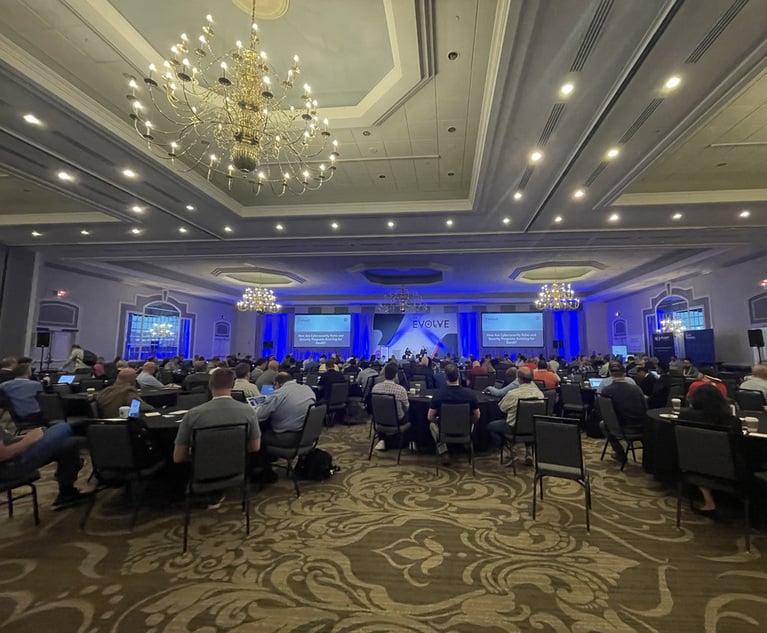An agent's greatest source of competition? Carriers' directsales via the online channel, according to a recent Accenturesurvey of independent agents.
|The report, "Evolving to Compete and Win in the Long-Term,"said that nearly three-quarters (71%) of the surveyed 1,158 U.S.independent P&C agents indicate that the threat took the formof lower prices, while 48% saw better brand recognition and moreeffective marketing as key elements of that competition.
|Besides the rise of the direct channel,changing consumer behaviors and new technologies are alsodisrupting independent agents' roles, which include their toppriority of retaining and servicing existing customers, andimproving the customer experience.
|"Independent agents, as a group, carry enormous weight withinthe P&C insurance business, representing more than half oftotal premiums written in the industry," said Michael Lyman, globalsenior managing director for insurance within Accenture Strategy,in a statement. "It is understandable that they are focused onkeeping existing customers, especially in light of capitalconstraints that make it challenging for most agencies to add salescapabilities to grow their business."
|That's not to say that new business growth is far from apriority. The survey indicates that independent agents are lookingto hire more staff, cross-sell insurance and up-selling newbusinesses.
|While the independent agent channel has strong assets, anincremental, piecemeal approach to tackling these challenges isunlikely to be successful, the survey says. While carriers andagents need each other, long-term success will require substantialand wide-ranging actions from both parties.
|To optimize the IA channel, carriers and IAs need to besynchronized in their actions, yet the complexities of thecarrier/agent relationship, and furthermore, thecapital/operational constraints of smaller agencies can hinderprogress. But for the purpose of optimizing the IAchannel, carriers and agents should work together to achieve fivemutually beneficial outcomes.
- Greater customer loyalty.
- The ability to engage with customers on their terms across allpreferred channels.
- The capacity to engage in advice- oriented sales andservice.
- More efficient and adaptive agency operations.
- Data-driven insights that make all parties more effective.
Click through the following slides to see which actions arecritical for agents and carriers to achieve these outcomes foroptimization.
|
Maintaining and improving customer loyalty
|For the independent agent:
|Independent agents should focus on providing differentiatedservices that are important to customers, and selectively choosecarriers that have similar goals. Furthermore, independent agentscan sharpen the focus on advisory services in order to put an agentin the position to give customers choices, while also assistingthem in making sound decisions on complex insurance and financialofferings.
|For the carrier:
|Carriers, on the other hand, can help improve customer loyaltyby facilitating critical agent-customer interactions withpredictable delivery, understanding the key customer "moments oftruth," such as the claims process, while also enabling agents toact on them.
|Accenture also recommends that carriers serve customers onbehalf of the agent, when the agent cannot. This includes offeringcomplementary client services. After-hours call services, forexample, and customer self-service options help to address customerneeds at anytime, in any place, on behalf of the agent.
||
Adopting an omni-channel approach to engage withcustomers on their terms
|For the independent agent:
|Integrating with the online distribution ecosystem, by becomingpart of the growth of new and alternative channels, is one way anindependent agent can adopt, fostering an omni-channel approach tobusiness.
|Furthermore, partnership with service providers that offergrowth-incenting digital capabilities, as well as embracing otheromni-channel options can further optimize the role of the IAchannel in the agent-client relationship. By providing advice andassistance to customers through different channels, agents caneasily engage with their customers and stay in touch throughvarious platforms.
|For the carrier:
|Carriers should focus on providing omni-channel capabilitiesthat help keep agents accessible, visible and relevant tocustomers, fostering a trusting relationship between the customersand IAs.
|This comes with the expansion of customer engagement through theimplementation of digital and omni-channel capabilities. Carriersare in the position to provide customers with convenient access towhat they may require or need through omni-channel capabilities andother digital services. Some capabilities might include advice orinformation offered via social media presence, an easy-to-navigatewebsite or online quoting services.
||
Engaging in advice-oriented sales andservices
|For the independent agent:
|While selling insurance products is the essential crux of anindependent agent's role, no less important is their ability toaddress customers' needs holistically. Agents should work toprovide advice for their clients on risk management and value-addedservices.
|Furthermore, agents should strive to modernize their businesspractices and increase focus on high-value tasks by using agencymanagement, CRM and other technology systems. The increasedproductivity and streamlined approach associated with theimplementation of these technological systems will leave the agentmore time to make the clients' needs their primary focus.
|For the carrier:
|Accenture recommends that carriers focus on deep, value-addedintegration with agencies. This includes assisting in streamliningagency processes to relieve staff of administrative tasks, andfurther allow them to focus on the customers. Carriers should alsoempower field managers to provide agents with real insights on howthey can sell products most effectively.
||
Creating efficient, effective and adaptive agencyoperations
|For the independent agent:
|Making the most of capabilities provided by carriers, deferringlow-value tasks to them while motivating producers to sell andserve customers is key in laying the groundwork for effectiveagency operations. Agents must also consider investing in newtechnology solutions that operate business through an integratedand highly efficient platform.
|For the carrier:
|Carriers, on the other hand, should meet agents where they are,supporting the agency's brand and growth, and not just theirpremium growth. Carriers should act on the agent's behalf throughtactics, which might include best practice trainings and infosharing sessions, agent-to-agent communities for interaction andthe extension of economics of scale to agencies.
|Furthermore, the simplification of business submissions andother key transactions under an integrated process can make iteasier for independent agents operating in a one-to-many carrierrealty to navigate separate processes and tools for severalcarriers, and furthermore, adopt those tools.
|By adopting new business and independent agent network models,carriers can then mitigate threats, while also taking advantage ofthe opportunity from new entrants, such as online aggregators.
||
Leveraging data to achieve insight- driven actionsandoutcomes
|For the independent agent:
|Agents need to apply basic analysis to current customer data andinteractions to identify relationship building, cross selling andretention opportunities, Accenture claims.
|For the carrier:
|Carriers need to focus on selecting and building strongrelationships with the right agents. This includes understandingwhich agents fit the mold of the carrier, and which agents share aparticular carrier's goals.
|From there, carriers should develop a segmentation-basedapproach to agent engagement, Accenture claims. In doing so,carriers should be sure to address the specific circumstances ofeach agency and use information (provided by informed andknowledgeable field managers) to assist in improving IAperformance.
|But Accenture notes that it is crucial to give agents specificinsights they can use, answering questions such as: "Where areunderpenetrated markets?" From there, the agent can identify moreopportunities and optimize their relationship with clients.
Want to continue reading?
Become a Free PropertyCasualty360 Digital Reader
Your access to unlimited PropertyCasualty360 content isn’t changing.
Once you are an ALM digital member, you’ll receive:
- All PropertyCasualty360.com news coverage, best practices, and in-depth analysis.
- Educational webcasts, resources from industry leaders, and informative newsletters.
- Other award-winning websites including BenefitsPRO.com and ThinkAdvisor.com.
Already have an account? Sign In
© 2024 ALM Global, LLC, All Rights Reserved. Request academic re-use from www.copyright.com. All other uses, submit a request to [email protected]. For more information visit Asset & Logo Licensing.








